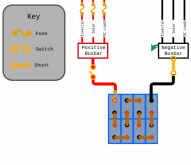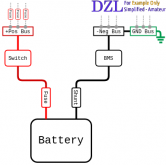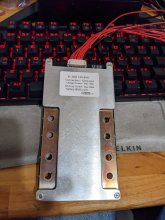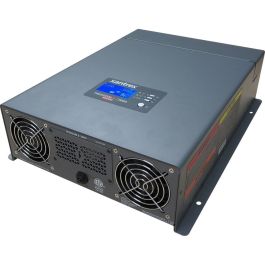The subject of earth ground vs chassis ground is complicated by the commonly used convention of indicating an electrical control enclosure chassis ground connection point with an Earth Ground symbol (like in the pic below). This is not technically correct, the box is not earth ground, the ground rod driven into the earth somewhere else is earth ground.
Well to me it means "connect this to earth". Like you write 12 V on something so people know they need to connect it to a 12 V source. But after doing a bit of research I see your definition est the correct one
The Chassis Ground symbol is used to indicate connection to the vehicle's metal body and frame and the down pointed triangle is used for everything else related to DC negative.
This is what I would do too.
It's interesting to note KiCad uses:
- the chassis ground symbol for the ground symbol: GNDPWR
- the earth ground symbol for the ground symbols: earth, GNDREF
- the signal ground symbol for the ground symbols: GND, GNDA, GNDS
- a thick horizontal line symbol for the ground symbol: GNDD
It doesn't make a lot of sense but I've seen a lot of times the chassis ground symbol used to designate the power ground, and the earth ground symbol used to designate the signal ground in datasheets and schematics.
I mean, chassis ground symbol for the power ground, why not; but earth ground symbol for the signal ground isn't logical, they should use the signal ground symbol for that.







